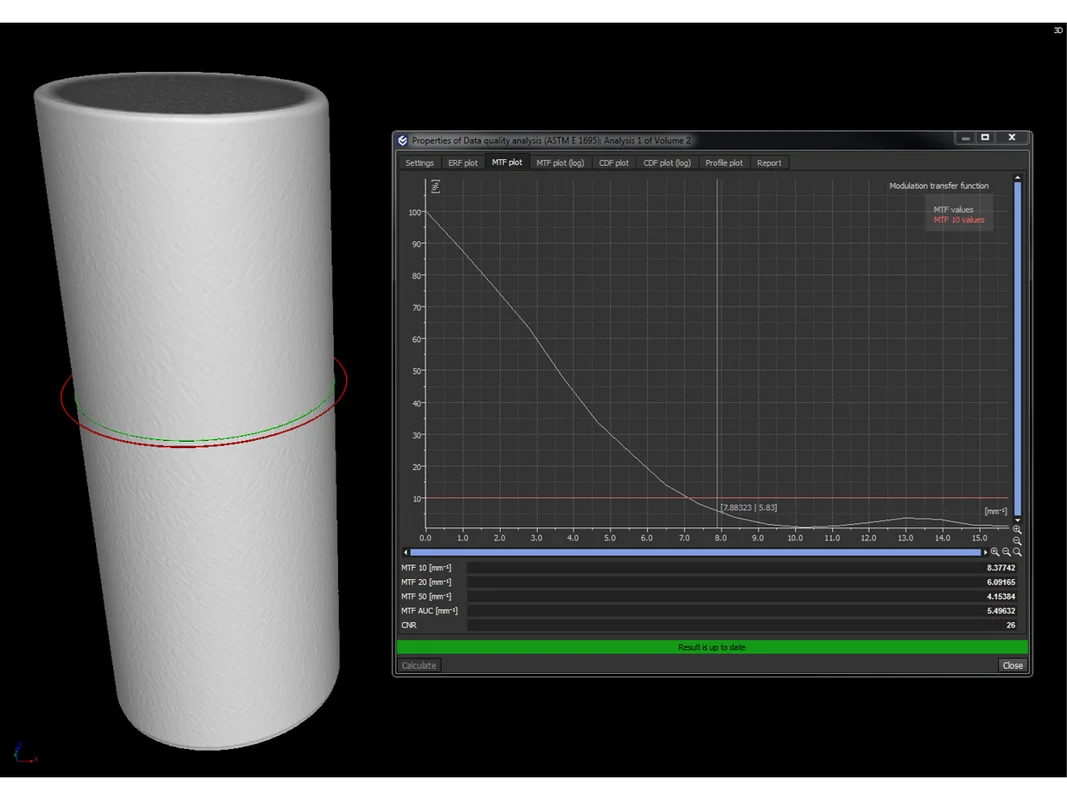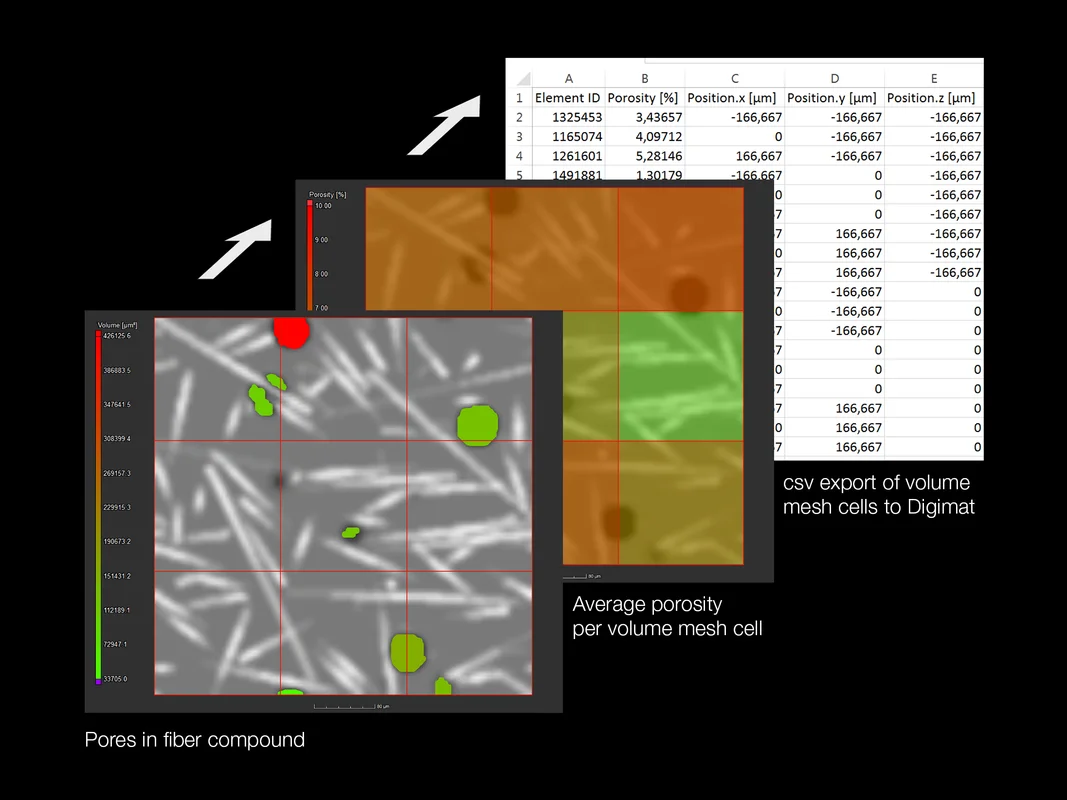This page is not compatible with Internet Explorer.
For security reasons, we recommend that you use an up-to-date browser, such as Microsoft Edge, Google Chrome, Safari, or Mozilla Firefox.

With the Volume Graphics product family, all kinds of analyses and visualizations can be carried out directly on data from industrial computed tomography (CT).
Version 3.2.4 Is Here
Volume Graphics introduces version 3.2.4 of its product family for the analysis and visualization of industrial computed tomography (CT) data – consisting of VGSTUDIO MAX, VGSTUDIO, VGMETROLOGY, VGinLINE, and myVGL. Version 3.2.4 boasts, among other things, a faster-to-use data quality analysis according to ASTM E 1695 and an extended interface between VGSTUDIO MAX and Digimat.
Highlights
Data Quality Analysis
The data quality analysis according to ASTM E 1695, which allows you to monitor the data quality of your CT scans over time in VGSTUDIO MAX, is now faster to use: You can select the slice to be analyzed directly within your analysis workflow. This eliminates the need for a separate pre-processing step to extract the slice from the scanned volume.

Digimat Export
The interface between VGSTUDIO MAX and Digimat has now been extended to also include the export of porosity information from CT scans into Digimat leading to a smooth and straightforward workflow which ensures that the exported .csv files can be directly imported into Digimat. No configuration of the export or post-processing of the files is required. The extended interface enables you to map microporosity in a statistical way onto a volume mesh by calculating the average porosity level for each cell of the mesh in VGSTUDIO MAX and then exporting it to Digimat.
The extended interface between VGSTUDIO MAX and Digimat allows you to investigate the influence of porosity on the mechanical properties of fiber compounds, no matter whether the porosity is unintended or introduced on purpose, such as in foam injection molding processes.
Moreover, when mapping fiber or porosity information onto integration meshes for the subsequent export to 3rd party software for structural simulation, the import of NASTRAN files as integration meshes now supports the large field format for tetrahedral elements.

Data Quality Analysis
- Data quality analysis (ASTM E 1695) can now extract 2D slices from a 3D data set.
- Data quality analysis (ASTM E 1695): Center of mass calculation is now more robust against gray value offset.
Simulation
- The interface between VGSTUDIO MAX and Digimat has now been extended to also include the export of porosity information from CT scans into Digimat leading to a smooth and straightforward workflow which ensures that the exported .csv files can be directly imported into Digimat.
- The integration mesh import and the Digimat interface now support NASTRAN file variants with "CTETRA*" elements in large field format.
CT Reconstruction
- Increased robustness of automatic misalignment correction in CT reconstruction.
CAD
- Import CAD files by simply dragging and dropping them into the scene.
Documentation
- Tutorial "Structural Mechanics Simulation—Advanced: Stress Simulation for Components with Porosity" also available in Japanese.
*Please note: Some of the items listed above may only be applicable to specific products or add-on modules that depend on the purchased license.
Availability of the New Version
VGSTUDIO MAX 3.2.4, VGSTUDIO 3.2.4, VGMETROLOGY 3.2.4, and VGinLINE 3.2.4 are available now. Volume Graphics is happy to provide quotes upon request.
Volume Graphics offers free evaluation versions of VGSTUDIO MAX 3.2.4, VGSTUDIO 3.2.4, and VGMETROLOGY 3.2.4 for temporary use.
myVGL 3.2.4 is available free of charge and can be requested on the Volume Graphics website.